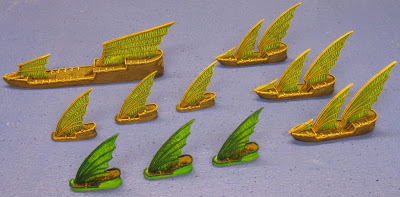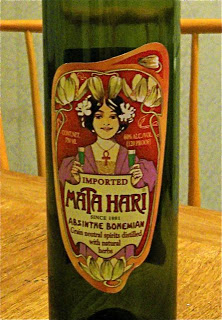Today, I played DBM (De Bellis Multitudinus) for the first time. DBM can be described as a scaled up version of DBA, a game that I am very fond of, but this description would be unfair to both DBA and DBM. I had a good time, and I’d definitely play DBM again, but I wouldn’t consider it an upgrade of or replacement for DBA and/or Big Battle DBA (BBDBA).
The rules
In many ways, comparing DBM to DBA is a bit like comparing long bike rides with shorter trips. You can have just as much fun, but it takes longer and requires a longer term mind frame. If you want to avoid suffering the whole time, it also may require a bit more training. And on a bad day, you’ll wish you opted for the shorter trip.
The beauty of DBA is its small scale and simplicity, matched with deep tactical complexity. Armies always consist of 12 elements, so they’re fast and easy to paint, and the limited army lists provide a good sense of closure when you’re finished. Games require only an hour to play, so even if you lose you won’t suffer for very long.
DBM is larger than DBA in several dimensions, with positive and negative consequences.
DBM adds support for larger armies and uneven forces on each side, using points-based army lists. This allows for playing larger battles and designing historic scenarios within the scope of the rules. However, it also increases the importance of the army selection meta-game, requires a lot more painted miniatures, and loses the “I’m finished!” satisfaction smaller DBA armies provide. Points based systems are always susceptible to minmaxing and twinking, even when the theoretical basis for the system is to match historical reality.
DBM also provides a greater level of detail with additional rules for things like weather, troop quality, and commander quality. The most visible aspect to me was the troop quality modifiers. These provide a finer grained difference between historical troop types that are considered identical in DBA (but weren’t in real life). I’m not experienced enough to decide whether this is a case of confusing “detail” with “realism” or not. However, for the DBA player interested in DBM, the main result is that there are many more close combat modifiers, and generally a lot more things to consider when resolving combat (or deciding whether to enter combat in the first place).
Due to the increased number of elements in each army the ground scale is different, but the movement rates have also changed to compensate. The command and control system is still PIP based, but also more complicated due to the larger armies.
The cumulative effect of all these differences is that you feel like you’re playing DBA on steroids, but some of the differences bite you when you least expect them, or force you to change your tactics to avoid being bitten. I could see myself losing brain cells if I were forced to constantly switch between these “similar but different” rulesets.
The game
This particular engagement was a 500 point game between “our” Pyrrhic army with Seleucid ally, who chased down “their” fleeing Carthaginians. There were about 75-80 elements on each side, split into 4 commands with 3 players on each side. Our individual commands had 4, 19, 19, and 36 elements in them (I think). Each command still only rolls d6 for PIPs, so PIPs for movement are more scarce than in DBA. The movement rules are more flexible for group moves in some ways, since there’s an expectation that you’ll be moving larger blocks of elements around.
This game was part of a large campaign played by a bunch of the guys in this gaming group. Our goal was to kill as many of Larry’s Carthaginians as possible before he got back. The other side’s goal was pretty much the same, since Larry wasn’t around.
I held our extreme left flank with a huge block of pike and spear (twice as large as a DBA army by itself), supported by bad-going support troops (another DBA army worth of Auxilia and Psiloi). (Huh… I just realized I had the Big command… I thought I chose the “easy, uncomplicated” command, not the huge one.) My goal was for the guys with the long pointy sticks to walk forward and crush anything in their path, while the guys with the short pointy sticks stood on the hill and prevented the enemy’s cavalry from turning our flank.
In the end, it worked! Not only did I fail to screw up tactically and lose, I actually rolled well enough in combat to kill superior troops with my light troops, including the enemy’s Commander in Chief, which ended the battle.
Having the Big command helped a lot, because Jim almost always assigned me the high PIP die, so I rarely lacked the PIPs to do what I required.
I think I was also aided by suboptimal enemy deployment, but part of this was likely due to a lack of choice by the time they deployed that flank. They had poor matchups against my pike and spear, but I think a bigger mistake was splitting their command in half. They sent most of their bad going troops halfway downfield to play in the mud (steep hills, really). This provided them with a PIP suck in the middle of the board, far away from their general, and reduced their options on my flank.
The game theoretically started at 1:30pm, but much time was spent finding boxes of figures, talking, and so on. We had everything packed up again by 7pm: not a short game.
Overall Impressions
Playing as a small part of a larger battle, and seeing the battle unfold on the field gave me a much better feel for the “grand tactical” situation than I often get from DBA. Now that I’ve seen this in a larger scale, maybe I’ll be able to translate that vision to smaller DBA battles.
As for my part in the battle itself, it felt fairly similar to playing an isolated and slow game of DBA on my flank. The amount of tactical decision making I had was not equivalent to what I’d see in 5 sequential games of DBA, by any means.
I’d definitely play DBM again… but at someone else’s house. I don’t even have a room large enough for the 8’x5′ table required, and don’t have nearly enough miniatures to field even one side of a 500 point battle. As with many of the larger games I play at conventions, I don’t like it enough to want to do it myself, but I do like it enough to “push lead” once in a while in someone else’s game.
Instead, to satisfy my personal “bigger game” fix, I’ll attempt to scale up some of my DBA armies into Impetus armies and/or BBDBA armies.




